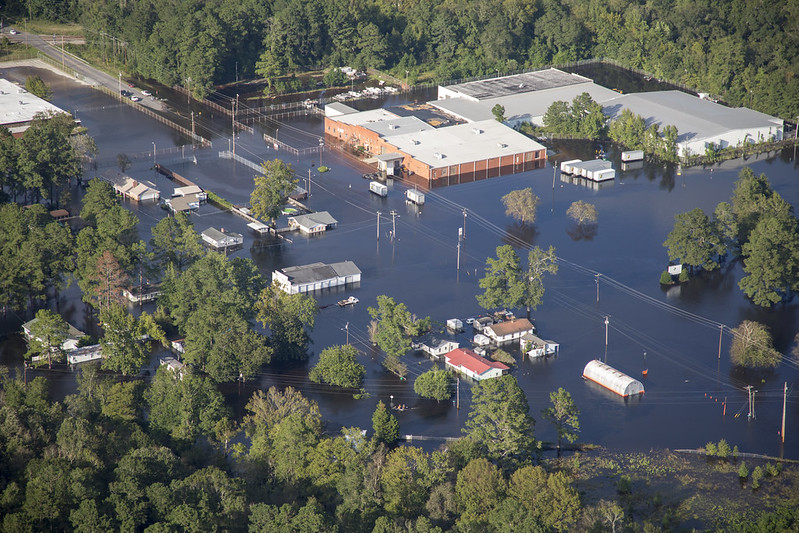
Photo: North Carolina National Guard
Four in five cities faced ‘significant climate hazards’ in 2022
19 October 2022
by Christopher Carey
Eighty percent of cities globally have faced at least one ‘significant climate hazard’ in 2022, according to a new report from non-profit group CDP.
The group – which runs a global environmental disclosure system – surveyed 998 cities for the report.
It found that four in five cities have experienced at least one of a range of hazards in 2022, including extreme heat (46 percent), heavy rainfall (36 percent), drought (35 percent) and urban flooding (33 percent).
“From the deadliest floods in Pakistan’s history to the worst drought across the continent of Europe in five centuries, 2022 has been another devastating year for climate change events,” said Maia Kutner, Interim Global Director, Cities, States and Regions at CDP.
“Every day, the world over, we hear routine phrases like ‘unprecedented’, ‘worst ever’ or ‘first time in history’ that do little to convey the staggering impact the globe’s rising temperature has on the planet and its people.
“As home to more than half the world’s population, cities find themselves sitting on the front line of climate change. They often lead the way on climate action, reporting data, setting science-based targets and making bold mitigation and adaptation plans.”
Urban sustainability network ICLEI also contributed to the report, which outlines how taking a ‘people-centric’ approach is an important factor in reducing risk.
Better outcomes
According to the CDP, cities that engage with citizens and put them at the centre of their climate policies report better outcomes for public health, social integration, the economy and the environment.
Close to two-thirds of cities surveyed (63 percent) are taking at least one people-centred climate action, such as: considering vulnerable populations, water security or nature in their climate risk assessment; having an adaptation goal that addresses energy poverty, transport, waste, water, land use, food or air quality; and engaging civil society including citizens, vulnerable groups and NGOs in climate action planning.
Almost half (45 percent) of the cities surveyed are engaging civil society in their climate action planning while almost two fifths (39 percent) consider vulnerable populations in their risk assessments.
“Putting people at the heart of climate action, from planning to implementation, improves lives,” added Kutner.
“It unlocks social, economic and environmental benefits, enhances equity and inclusion, and ensures a just transition to a low-carbon economy.
“Cities that identify vulnerable groups, engage with them, and understand their needs to deliver just adaptation strategies see the clear benefits and create a sustainable future for people and the planet.”
Image: North Carolina National Guard








